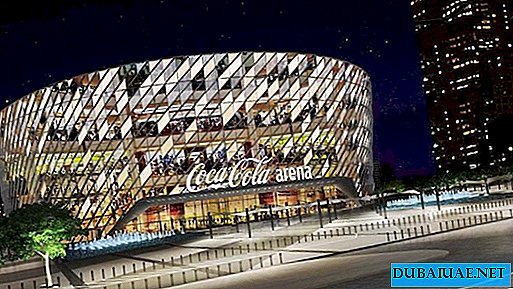Tatyana Peschanskaya, doctor, medical sciences condidate, passionate traveler and our regular author
 "For whom, a trip to Sicily did not become a prize or almost a fulfillment of a vow." This aphorism from Cesare Brady’s book “My Sicily” perfectly reflects the essence of traveling to this country from a striking edge. Sicily has a thousand languages, a thousand souls, a thousand diverse panoramas. Here history and myths are intertwined, agony and rebirth, brilliance and oblivion, moreover, in such a whimsical game of contrasts and contradictions, what about the obvious can easily turn out to be fictional, and the fantastic can be real.
"For whom, a trip to Sicily did not become a prize or almost a fulfillment of a vow." This aphorism from Cesare Brady’s book “My Sicily” perfectly reflects the essence of traveling to this country from a striking edge. Sicily has a thousand languages, a thousand souls, a thousand diverse panoramas. Here history and myths are intertwined, agony and rebirth, brilliance and oblivion, moreover, in such a whimsical game of contrasts and contradictions, what about the obvious can easily turn out to be fictional, and the fantastic can be real.
There is Sicily fertile and earthly, some classic "Mediterranean garden", where palm trees, bananas, citrus, pistachio, olive and just exotic trees grow luxuriantly. But there is Sicily hard and dry, scorched by the African sun, painted in yellow sulfur color. There is Sicily and soft rounded hills covered with cereal fields. We met Sicily with a clear, blue, clear sea, bordered by a white beach strip, as in the tropics, or opposite a dark shade formed by frozen magma. There is no shortage of mountainous Sicily in different colors - sometimes white from snow, and sometimes black, from lava: these are the volcanic islands of Stromboli, Volcano and "His Majesty" Etna, the largest volcano in Europe, never disappointing thrill-seekers. Light reigns over all this variety of landscapes, bright and penetrating everywhere, sometimes too annoying. Another important Sicilian “character” is the wind, an African sirocco blowing with methodical sequence in all crevices and carrying red sand dust from the Sahara (but sometimes painting the sky in deep blue tones, such as indigo). And finally, let's not forget the local climate - the one that closes the summer season in December and already in February brings spring "to the yard." 
At three angles
Some statistics about the island. It is the largest in the Mediterranean, has a triangular shape and is surrounded by small islands and three seas - the Tyrrhenian, Ionian and the Mediterranean proper. The coastline is 1,500 km. The population is 6 million people. The largest city of the island and its capital is Palermo. A narrow, only 3 km, but deep tide separates Sicily from the Apennine peninsula. Trinacria - this island is named after Homer, that is, “with three capes”: CapoPeloro at Messina, Capo-Boeo at Marsar and Capo Passero (the Italian word “capo” actually means “cape”). The ancient Romans called it the Triquet (triangle), for its characteristic shape, and this emblematic triangle is now found everywhere. For example, on ceramic products, in the complicated form of a female head with three legs bent at the knees. The etymology of the modern place-name Sicily is elevated to the Indo-European word "sik", meaning "rapid maturation"; hence the name of the first inhabitants - sicula. Despite the island character of Sicily, the locals are more peasants than sailors and fishermen (however, they catch tuna and swordfish, which have become symbolic Sicilian fish).
For many centuries, an incomparable artistic diversity has formed on the island, including a wide variety of styles and tastes that have become a truly Sicilian miracle, because there are few places on Earth where people have managed to perceive and realize in a big way, but always in so many harmonious and original forms beauty.
History and mythology on the island are almost inseparable. The spirits of Homer and Odysseus, Demeter and Persephone, Zeus and Apollo, as well as the legendary Elim, who, according to Thucydides, descended from Trojans who escaped from the horrors of a protracted war and landed in Sicily, seem to be hovering over this land. The Elim, the first enlightened colonialists of the region, later added the Phoenicians, Greeks, Romans and Byzantines. Then the Arabs conquered the island, who fell in love and groomed it: science and art, agriculture and trade flourished here. For the Arabs came the Normans, who again rebuilt the previously laid Byzantine temples and monasteries.
Under Frederick II, the wise sovereign, Sicily became the most brilliant monarchy in Europe. Scientists, artists, musicians, poets were drawn to Friedrich, as a result, it was his palace that was considered the cradle of the literary Italian language. After the Varangians, the Spaniards owned the island for a long time, then the Neapolitan Bourbons, and in 1860, after the expedition of Giuseppe Garibaldi, he became part of the united Italy. Paradoxically, joining a single nation was accompanied by the impoverishment of Sicily and the subsequent forced emigration of its inhabitants: all this led to an even greater isolation of the island from the main routes of European civilization.
As a result of the mixing of tribes, peoples, languages and cultures, the Sicilians were born - sharp-witted and proud people, polite and hospitable, with a complex character and a special way of expression. They all have a pronounced sense of belonging to their native land, as if the fact of Sicilian origin gives special rights and obligations, including for immigrants - the obligation to return to their homeland, even in symbolic forms. The writer S. Quasimodo speaks well of this: "My land is tied to the sea by rivers, and wherever my feet go, there is no place where I do not hear her slow speech."
Sicily is truly a "land of miracles"; it is a bridge between the West and the East. The art historian P.P. Muratov once wrote that "Sicily meets sternly and undercurrent, like a real overseas land of ancient travel."
 There is Western Sicily, regal and democratic, sophisticated and poor, Punic and Arab, with the cities of Palermo, Trapani, Mozia, Marsala - where noble and intricate mansions, Moorish domes, Byzantine mosaics and small squares, rustling with a melodic voice. And on the other side of the island - Eastern Sicily, classical and melancholic, dominated by beauty and oblivion, the greatness of the Greek genius and the carelessness of subsequent civilizations, with the cities of Agrigento, Selinunte, Sedzha, Syracuse and Catania - here the dialect sounds sharper and more severe.
There is Western Sicily, regal and democratic, sophisticated and poor, Punic and Arab, with the cities of Palermo, Trapani, Mozia, Marsala - where noble and intricate mansions, Moorish domes, Byzantine mosaics and small squares, rustling with a melodic voice. And on the other side of the island - Eastern Sicily, classical and melancholic, dominated by beauty and oblivion, the greatness of the Greek genius and the carelessness of subsequent civilizations, with the cities of Agrigento, Selinunte, Sedzha, Syracuse and Catania - here the dialect sounds sharper and more severe.
Finally, there is South Sicily, with the cities of Noto, Modica and Ragusa, famous for magnificent cathedrals, “stone gardens”, where the fantastic and theatrical baroque gives its performances against the backdrop of memories of earthquakes and wars, convulsive activities and idleness, mourning and celebration, and also the centuries-old conservatism inherent in the local barons - those proud "Leonards" described by the Sicilian classic Tomaso di Lampedusa.
Palermo - Kaleidoscope City
Our journey through Sicily began with Palermo. This is the former royal capital, and it is impossible to hide the royal origin of the city, but at the same time it is a real "city of contrasts". Here aristocratic wealth is opposed by poverty and humiliation, rooted in centuries. Palermo is a city of luxury and a city of melancholy, passion and frank tenderness.
His charm is known to the whole world: Palermo managed to preserve the charm of departed things and traditions that have not survived in other parts of the world. Truth does not lie here on the surface, and the Palermans, smart and hospitable people, do not belong to the category of those whose souls are “wide open”: here they love etiquette and metaphors. However, a traveler with a reserve of patience and curiosity finds a lot here, and above all, the components of many cultures of Europe and Asia, which created a unique civilization. Aliens have ruled in Palermo for almost three thousand years and settled here so tightly that they ceased to feel like aliens. As a result, we see here a bizarre legacy of the Punic, Ancient Greek, Roman, Byzantine, and everything else. The Arab pile of houses and tutu huts adjoins the mighty Varangian architecture, the quaint Spanish Baroque and the cosmopolitan "modern" (called "liberty" in Italy).
The city stands right on the Tyrrhenian Sea, under the heavy silhouette of Mount Pellegrino (the cape with Mount Goethe called "the most beautiful cape in the world"), steps down to the valley of the Golden Shell, so named because of the bright glare of the sun on citrus groves.
Today Palermo is the axis around which the political, economic and cultural life of the region revolves. Acquaintance with the city can be made on a carriage (from the Massimo Theater), but best of all - on foot, feeling the smells and aromas reigning in it: Palermo is as if saturated with orange blossom, jasmine and notes of other colors, to which a persistent smell of fresh fish and seafood is mixed.
We approached the Porta Nuova in the historic center of Palermo, the magnificent palm garden of Vidd Bonanno, in honor of the mayor of Palermo who defeated him, and the Piazza della Vittoria. Norman stands here, aka the Royal Palace, now the residence of the Sicily Region. In the Kapo quarter, there is one of the most beautiful theaters in Europe - the Bolshoi Theater (Teatro Massimo), a true temple of opera. Its impressive six-columned portico is decorated with two lions, on which an allegory of Tragedy (right) and an allegory of the Opera (left) are seated.
The magnificent building of the Cathedral (Cattedrale) gives, like no other city monument, the best idea of the synthesis of cultures that took place in this peculiar region. Dedicated to the Assumption of the Mother of God (S. S. Assunta), the cathedral was founded in the 12th century at the behest of Bishop Palermo Walter del Mulino at the site where the early Christian basilica, which was converted by the Moors to the mosque, once stood.
Royal and imperial tombs are located in the cathedral, in particular Roger II, Henry VI, Constance of Aragon, Empress Constance, Frederick II, Peter of Aragon, William of Athens and other earthly rulers. The chapel of the Relics contains particles of the relics of St. Mary Magdalene, as well as St. Christina, the first patroness of the city.
The city market of Vucciria in the piazzo of Concordia is a real mirror of the habits and life of the Sicilian people. Always full of people and seething, it is a feast of colors and smells. Here you can meet the masters and sellers, known throughout the city: the act of buying instead of simple necessity turns into a performance and a process of social communication. The national soul of the city makes a huge impression, clearly manifested in the days of holidays and religious ceremonies.
Mafia, the historical "ulcer" of Palermo and the entire island should be mentioned. About this criminal organization, which at certain points in the life of Sicily became a kind of parallel government, much has been said and written. The best people of Italy are doing their best to uproot this malignant tumor, inhibiting the progressive development of the region, and much has already been done. The city seeks to overcome the provincial isolation and fully enter the context of New Europe. Recently, he became a twin of Russian Yaroslavl, and the mayor expressed his intention to make Palermo "the gateway to the Mediterranean for Russia."
Palermo is a multi-confessional city, where the presence of Orthodox traditions is especially noticeable. According to ancient mythology, Ceres, Aphrodite, Persephone, Arethusa and other goddesses dominated here. When Christianity came here, supplanting paganism, the Sicilians began to worship the Virgin Mary, finding in it the “First Mother” and the fundamental principle of the human community. They especially value the image of the “Mother of Humanity” at the foot of the cross, where Her Son, God, is crucified. From the historical mosaic of ancient tragic myths and Christian sorrow, a special Sicilian religiosity was born, which has its own distinct features, carefully preserved to this day.
On Monte Pellegrino stands the Sanctuary of Saint Rosalia. This young woman, who, according to legend, came from a princely Varangian family, retired for peace and prayer to one of the caves. After her death in 1166, a broad popular cult arose that recognized in Rosalia the miraculous heavenly intercessor. Her miracles included the cessation of the monstrous cholera epidemic that hit Palermo. Citizens reverently revere their patroness, affectionately calling her "Santuzza" (the abbreviation for "Santa" is a saint), and on Palermo's houses there are often inscriptions such as "Long live Holy Rosalia!"
 Eight kilometers from Palermo we visited Montreal. A glance from here rises to the enchanting beauty of the Golden Shell. Today this place is famous for its cathedral and monastery. Without a doubt, the monumental cathedral is one of the most brilliant examples of Norman art in Sicily, which was then still open under Byzantine and Arab influence. The temple was founded in 1172 at the behest of King William II the Good. The work went unusually fast: after ten years, about a hundred Benedictines had already settled here. The temple of the monastery was dedicated to the Virgin Mary. Now, as before, the cathedral delights its visitors with extraordinary beauty. This primarily refers to Orthodox mosaics. More than 130 mosaic paintings covering almost all the walls: their total area is 6340 square meters. meters (this is one of the largest mosaic cycles in the world). Apart from the cathedral, the Royal Palace, facing the seminary, and the courtyard with a fountain, have reached us from the old Montreal ensemble. This poetic architectural composition bears traces of Moorish and Spanish influences.
Eight kilometers from Palermo we visited Montreal. A glance from here rises to the enchanting beauty of the Golden Shell. Today this place is famous for its cathedral and monastery. Without a doubt, the monumental cathedral is one of the most brilliant examples of Norman art in Sicily, which was then still open under Byzantine and Arab influence. The temple was founded in 1172 at the behest of King William II the Good. The work went unusually fast: after ten years, about a hundred Benedictines had already settled here. The temple of the monastery was dedicated to the Virgin Mary. Now, as before, the cathedral delights its visitors with extraordinary beauty. This primarily refers to Orthodox mosaics. More than 130 mosaic paintings covering almost all the walls: their total area is 6340 square meters. meters (this is one of the largest mosaic cycles in the world). Apart from the cathedral, the Royal Palace, facing the seminary, and the courtyard with a fountain, have reached us from the old Montreal ensemble. This poetic architectural composition bears traces of Moorish and Spanish influences.
About locals, cuisine and chocolate
On the island we saw both “natives” - blondes with blue and even greenish eyes, who consider themselves descendants of the Vikings, and burning brunettes with black eyes and tragicomic faces, similar to masks from ancient Greek performances. The drama and generosity of this land gave rise to a galaxy of writers and thinkers, two of whom became Nobel laureates (Quasimodo and Pirandello).
They made a significant contribution to the literature of the XIX-XX centuries, telling about the original land, about the unique way of life, about social problems - with a clear firmness inherent in Sicilians, and not without humor.
 Without exception, visitors to the island appreciate the culinary of this region. Sicilian gastronomy follows the Mediterranean tradition of bread and pastry. A Sicilian, like a Russian, cannot eat without bread. For bread, pasta, such as pasta with sardines or Norma, invented by culinary specialists from Catania in honor of the composer - his fellow countryman Vincenzo Bellini. Rice introduced by the Arabs is used in Sicilian cuisine to prepare casseroles with sweet oranges or “arangini” pies with saffron, meat sauce and pumpkin cheese.
Without exception, visitors to the island appreciate the culinary of this region. Sicilian gastronomy follows the Mediterranean tradition of bread and pastry. A Sicilian, like a Russian, cannot eat without bread. For bread, pasta, such as pasta with sardines or Norma, invented by culinary specialists from Catania in honor of the composer - his fellow countryman Vincenzo Bellini. Rice introduced by the Arabs is used in Sicilian cuisine to prepare casseroles with sweet oranges or “arangini” pies with saffron, meat sauce and pumpkin cheese.
Arabs introduced couscous into the local culinary traditions, and in Trapani cuisine it is the main dish, to which even a special holiday is dedicated. Sicilian cuisine is dominated by good fish, a symbol of this land and sea. First of all, it is a swordfish and tuna, which is baked, smoked, fried, including on charcoal, with tomatoes or, as the Greeks did, in grape leaves.
What about excellent sweets? Sicily is the master of desserts. Her talent is embodied in a dish full of oriental bliss, in a local fruit cake, which was once a treat of emirs. Cassata fruit cake first appeared around 900 with the arrival of the Arabs, when a Saracen chef mixed cream cheese (ricotta) with sugar and added candied fruit and bread soaked in rum. Ricotta is also filled with the famous cannoli wafer rolls. Do not forget the ice syrups with almonds, lemon, coffee. The Trapani chefs take pride in a skurzuner, an ice cream made with jasmine buds.
Deliciously delicate taste has a special ice cream (geli) with watermelon, melon and jasmine, sprinkled with cinnamon and chocolate. And a little about chocolate. The inhabitants of Modica owe the preparation of hard chocolate according to an ancient recipe to the monkumissioner Bernandino de Sahugun. His recipe has been passed down from generation to generation and has survived to our time. This gourmet chocolate, which is admired throughout the world, is prepared by craftsmen using a special technique of cold cooking. The Archistrate from Gela also praised the cuisine of Sicily, and the local chefs were often invited by the Athenians themselves, who greatly appreciated their art.
Today, travelers from around the world fill the resorts and beaches of Sicily itself and the neighboring small islands. Many people choose elite corners, such as the aristocratic Tafmina. Many seek to climb to the top of the legendary Etna. Each of us will forever take away in our memory unique Sicilian landscapes, the many colors of mountains and sea waters, quaint church baroque porticos and mosaics of cathedrals, magical silhouettes of castles and citrus groves, boundless expanses and heady aroma of smells. All this together you can meet, admire and admire only on the island with a beautiful name - Sicily.
The island of Sicily is a revelation ...











